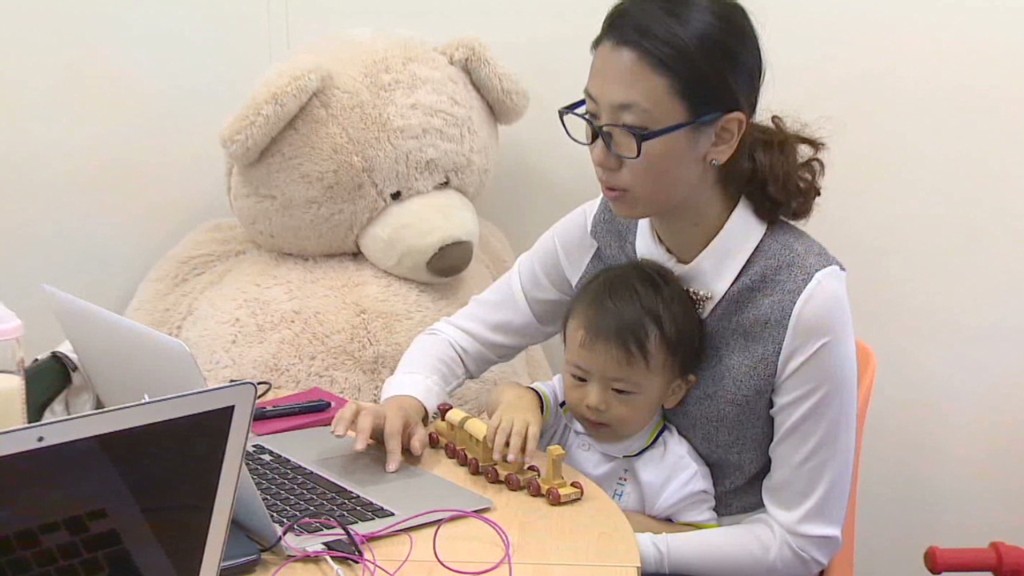
Three years ago, Shinzo Abe launched a grand experiment designed to jolt Japan's economy out of decades of stagnation.
Now, there's a growing consensus that the prime minister's program is on the rocks.
Known as "Abenomics," it included three so-called arrows: massive monetary stimulus, increased government spending and significant economic reforms.
The plan got off to a roaring start. Once reluctant to engage in unconventional monetary policy, the Bank of Japan embraced Abe's vision and launched a huge bond-buying program. The central government turned on its spending tap. Markets rallied and the yen plummeted against the dollar.
The idea was that as prices rose and businesses profited, they would pass on a bigger share of earnings to workers, who would spend more on goods and services. If it worked, the "virtuous cycle" would deliver sustained economic growth.
The program, however, has faltered. Wage growth is lackluster, and inflation remains far below the central bank's 2% target. Gross domestic product shrank at an annualized pace of 1.2% in the second quarter, and there's evidence that the economy may have fallen back into recession in the third quarter.
"The economic data published since the Bank of Japan's last meeting in mid-September have provided further evidence that the economic recovery has ground to a halt," said Marcel Thieliant of Capital Economics.
Ratings agencies, meanwhile, are increasingly worried about Japan's astronomical government debt, which totals nearly 250% of annual gross domestic product. The latest downgrade came from Standard & Poor's, which warned that Abenomics "will not be able to reverse" the deterioration in Japan's creditworthiness.
Related: IMF warns Japan over its staggering national debt
So why has Abe failed?
One explanation is that his third arrow -- economic reform -- has flown wide of the target. Proposals to allow more immigrants, needed to slow the rapid aging of the population, have gone nowhere. Planned changes to the labor market and tax system have also stalled.
But Abe, and his allies at the Bank of Japan, are not giving up just yet.
The central bank is likely to further expand its stimulus program, either this week or at the end of the month. This is "all but inevitable," according to Thieliant.
The prime minister, who could remain in his post for three more years, has also fired "three new arrows." The measures, however, have been criticized for a lack of detail and ambition. Abe failed to specify how long one arrow -- a pledge to boost nominal GDP by 22% -- would take to materialize.
"This new plan is unlikely to accelerate work to implement reforms and may well add confusion to a... process that many people inside and outside Japan already find frustratingly complex," said Scott Seaman, an analyst at Eurasia Group.
Some economists maintain a rosier view of Abenomics. If you strip out energy prices, inflation numbers look much better, they argue. Per-capita income is keeping pace with other developed economies, and consumption is increasing.
"Japan faces a much less challenging outlook than conventional wisdom holds," said analysts at Barclays.


